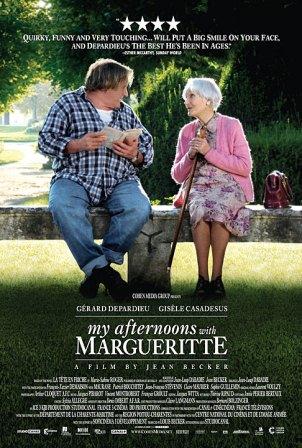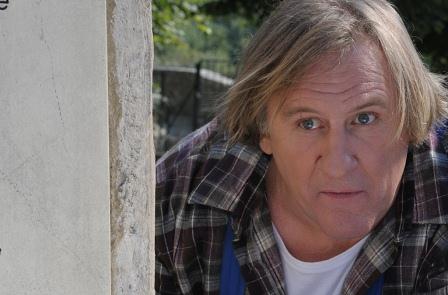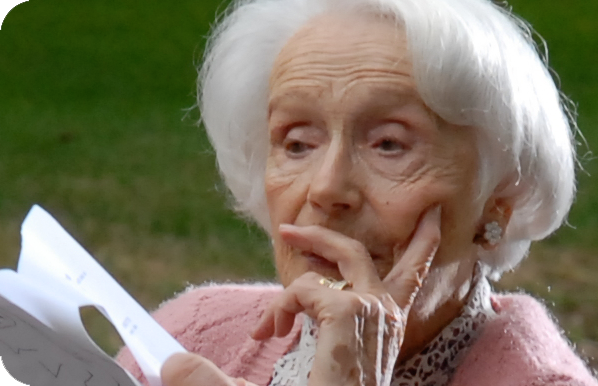Once upon a time, park benches offered all kinds of opportunities to meet interesting people.
- Parents sitting by a playground might make friends with others as they watched their children play.
- Birdwatchers might make contact with fellow birders.
- Men cruising for sex might strike up an interesting conversation with a handsome stranger.
What happens every day in real life can easily become the basis for a play or film.
- In 1958, during Edward Albee's first play, The Zoo Story, Peter and Jerry met on a bench in Central Park.
- In 1984, Herb Gardner's play entitled I'm Not Rappaport focused on two elderly men (one Jewish and one African-American) who spend their days sharing a park bench.
- In 2009, a documentary about red-tailed hawks nesting near Central Park entitled The Legend of Pale Male captured a regional interest story with sensitivity and magnificent cinematography.
While Ernest Hemingway's novel, The Old Man and the Sea, may have focused on an aging fisherman's battle with a marlin, two new dramas focus on the links between an old woman and a book. In each case, a younger man's interest in reading is the glue that holds the plot together.
Recently seen at the San Francisco Fringe Festival, Neil Koenigsberg's On A Bench is a poignant one-act play for two characters seated on a bench in Sheridan Square.
- Robert is a young man from a wealthy family whose mother calls his cell phone asking her son to remember to pick up some chocolate truffles for that evening's dessert.
- Anne is an older woman with a thick New York accent on her way to an appointment to have her hair styled at a local beauty salon.
As they sit facing the Stonewall Inn, Robert ponders his future while Anne thinks about her past. What unites them is the book in Robert's hand: Stonewall: The Riots That Sparked The Revolution, by David Carter. Why? One of the men on the cover was Anne's brother.

Cover art for Stonewall: The Riots That Sparked The Gay Revolution
Anne's concern about Robert's future is visceral as she describes the night her brother came out to their family and was banished from their home. She never saw or heard from him again. As she gets to know Robert, who has enjoyed every advantage in his young life (health, wealth, education, and accepting parents), she urges him to treasure every meal he shares with his family.
I can't quite put my finger on why the performance of On A Bench I attended didn't quite gel. Koenigsberg's script is solid. Michael Paul Pulizzano's direction was more than adequate. Since this was the play's third performance at the festival, it's possible that the actors never had sufficient rehearsal time to really get inside their characters.
One often hears a person described as a poster child for some cause or disease. A new French film starring G?rard Depardieu and 95-year-old Gis?le Casadesus stands a good chance of becoming the poster child for adult literacy programs.
My Afternoons with Margueritte is a small, intimate film. There are no car chases or special effects. Its simplicity, honesty, and poignancy form the foundation for a deeply moving cinema experience.
Depardieu plays Germain, a big hunk of a man in his mid-fifties who, for all intents and purposes, is functionally illiterate. Far from being the village idiot, he's a good-natured man who drinks with his friends, has a beautiful younger girlfriend (Sophie Gullemin) who is a bus driver, and still lives close to his increasingly demented shrew of a mother (Claire Maurier). Often, when Germain thinks he is giving someone a compliment (or helping to explain something), his social clumsiness only makes matters worse.
Germain was the unwanted byproduct of a one-night stand that, as far as his mother is concerned, ruined her life. With her mental facilities rapidly diminishing, his mother wastes no opportunity to insult Germain (who reacts with his usual good-natured frustration).

Poster art for My Afternoons With Margueritte
A simple man, Germain loves simple things. He has even named each of the pigeons who gather each day in front of his favorite park bench. As Depardieu explains:
"Contrary to what a lot of people might think, Germain is a real character of our time. He is extraordinarily positive and that's what's wonderful about him. For all that, he's no simpleton. He could have been me. And in any case, he's just like what I was as a youth in Ch?teauroux before heading off on the road at age 13. Just like him, I observed everything, I watched what was going on. So he's somebody I know very well. He has a lot of humor and a lot of love in him.Germain doesn't see the bad in things. He has his complexes, but he's hard to rile. Even if he gets no love from his mother, he never blames her. And he is loved by that young woman played by Sophie Guillemin. When you see them together, it seems like there's no age difference because he is pure. To me, he represents what remains of life if you run away from the society that is offered to us: The schools that teach our children and, by definition, destroy their dreams. Germain is outside of any shaping, but he clings to certain values and to life despite having taken some hard knocks from it."

G?rard Depardieu in My Afternoons With Margueritte
One day, Germain sits down on his favorite bench in the park beside a little old lady who is his polar opposite. A former doctor who has traveled the world, Margueritte is an intellectual who is nearly 40 years older than German and about 200 pounds lighter than him.
Margueritte, who lives in an assisted care facility, loves to pass the time by reading aloud. She also loves the pigeons in the park.
Because Germain can barely read, he is fascinated by Margueritte's passion for literature and the joy she gets from reading. As their afternoon meetings develop into a routine, she continues to read aloud to him and eventually gives him a dictionary as a gift. "Using a dictionary is like traveling from one word to the next," she explains. "You lose yourself as if in a labyrinth. You stop and you dream."

Gis?le Casadesus in My Afternoons With Margueritte
This article was cross-posted on My Cultural Landscape. To continue reading, click here.
To read more of George Heymont go to My Cultural Landscape
?
Follow George Heymont on Twitter: www.twitter.com/geoheymont
Source: http://www.huffingtonpost.com/george-heymont/the-old-lady-and-the-book_b_1035320.html
ponder loretta lynn extract extract bobby jindal bobby jindal talladega
No comments:
Post a Comment